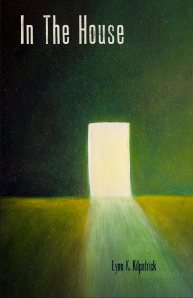I like the idea of a book club: the shared experience, the rush to finish by a certain date.
But I've resisted joining a book club. I dread fitting another thing into my schedule. I worry about liking the book more (or less) than others. Some book clubs devolve into parties during which no one mentions what they have (or have not) read. Clubs at libraries might feel too clubby to a newcomer. Besides, as an English professor, I don't want to hear remarks about watching one's grammar or feel unspoken concern that I'll trump comments with academic mumbo-jumbo.
My friend Rachel Hall came up with an alternative: The Itsy-Bitsy Book Club. I chose the name and think the idea can work for others.
It's just the two of us. It's just one book once a year.
This plan emerged because Rachel and I went to college together but, because we live on opposite coasts, see each other only once a year at the Association of Writers and Writing Programs Conference. Last year, we wandered into the conference's immense book fair. Rachel suggested that we pick out a book together, then read it after returning to our respective homes.
Our basic rule for picking the book was that neither of us could have read it already. In fact, we decided to pick something about which we'd heard nothing before. A surprise, that's what we wanted.
Rachel perused titles carefully, reading the blurbs, asking the presses' representatives questions. We agreed that she would make the choice, but I retained veto power. If I said no, we went on to the next table. I admit that I wanted something short. A consensus, that's what we wanted.
 Last year, we chose Lynn K. Kilpatrick's In the House (University of Alabama Press), a marvelous book of what the cover says is "lists, character sketches, directions, scripts, and instructions." They are short stories. Or they are poems. It doesn't matter. These little pieces draw a reader into the setting and into the character's life.
Last year, we chose Lynn K. Kilpatrick's In the House (University of Alabama Press), a marvelous book of what the cover says is "lists, character sketches, directions, scripts, and instructions." They are short stories. Or they are poems. It doesn't matter. These little pieces draw a reader into the setting and into the character's life.
What I found most fascinating about The Itsy-Bitsy Book Club last year was that my friend and I read In the House differently. Rachel read it straight through in one sitting, while I parsed it out the way I do a chocolate bar, savoring one piece each night over a couple of weeks. In other words, our shared experience made me think not only about what was in the book but also how I was reading the book.
This year, we chose Who Was Changed and Who Was Dead by Barbara Comyns, a British writer who died in 1992. She'd written eleven books, but we'd never heard of her. The cover's look and feel influenced our choice. We appreciate beautiful books and, in this age of electronic publishing, presses that value books as art objects.
As we began reading, Rachel wasn't convinced by the first few pages, but I was immediately and completely enamored. Our email exchange had me thinking really specifically about why I liked this book: the description and images. Writers are leery of cluttering up our prose with adjectives, but Comyns had no fear of adjectives, often packing in two where a creative writing professor like me would say one would do.
Here's the sort of sentence I enjoyed: "She climbed the hill that led to the ruined hovel, and, as she came near a cottage with lights showing from every window, she heard a child's piercing screams and a woman crying." Does it matter that the hovel is in ruins? Do I need all those lights and windows? No, but I'm glad I get all that scenery. What's more, this sentence lingers over the walking and delays the screams, which is exactly what happens to the character in the fictional moment.
The characters come alive because we get extra detail: the maids' legs turning red, the man biting his fingernails, and the grandmother in a tizzy when she hears a beetle in her closet. The characters also captivate because the reader is aligned with one character going into a scene but follows another on her way out the door. Like the rule of thumb about adjectives, slipping perspective from one character to another -- to any character who happens to attract attention -- isn't recommended. But in the first few pages, Comyns teaches the reader to handle her wily point-of-view ways, and her choices keep the story roaming as the pages turn.
Who Was Changed and Who Was Dead is part of Dorothy, a project focused on publishing books by women and started by Danielle Dutton. Of her own work, Dutton says in an interview at Bookslut, "Partly, it has to do with how much I've internalized these characters over the years, how they live on in me after I'm done reading. But it's also about the writers, the strange way they might have of forming that character, or forming a sentence." That also defines Dorothy as a project and my experience reading this novel.
The Itsy-Bitsy Book Club is a great way to connect with a friend and with literature. Here's how to set up your own version:
1) Choose a friend, preferably someone you don't see often but with whom you want to stay connected.
2) Choose a book, definitely one neither of you have read, preferably one that's not already on your lists of things to read. If you buy the book together in person, ask the bookseller for recommendations.
3) Exchange phone calls or email messages as you read.
That's The Isty-Bitsy Book Club.
Also, give In the House and Who Was Changed and Who Was Dead a read. Each is its own thing, and I wouldn't have found them without my Itsy-Bitsy Book Club.
